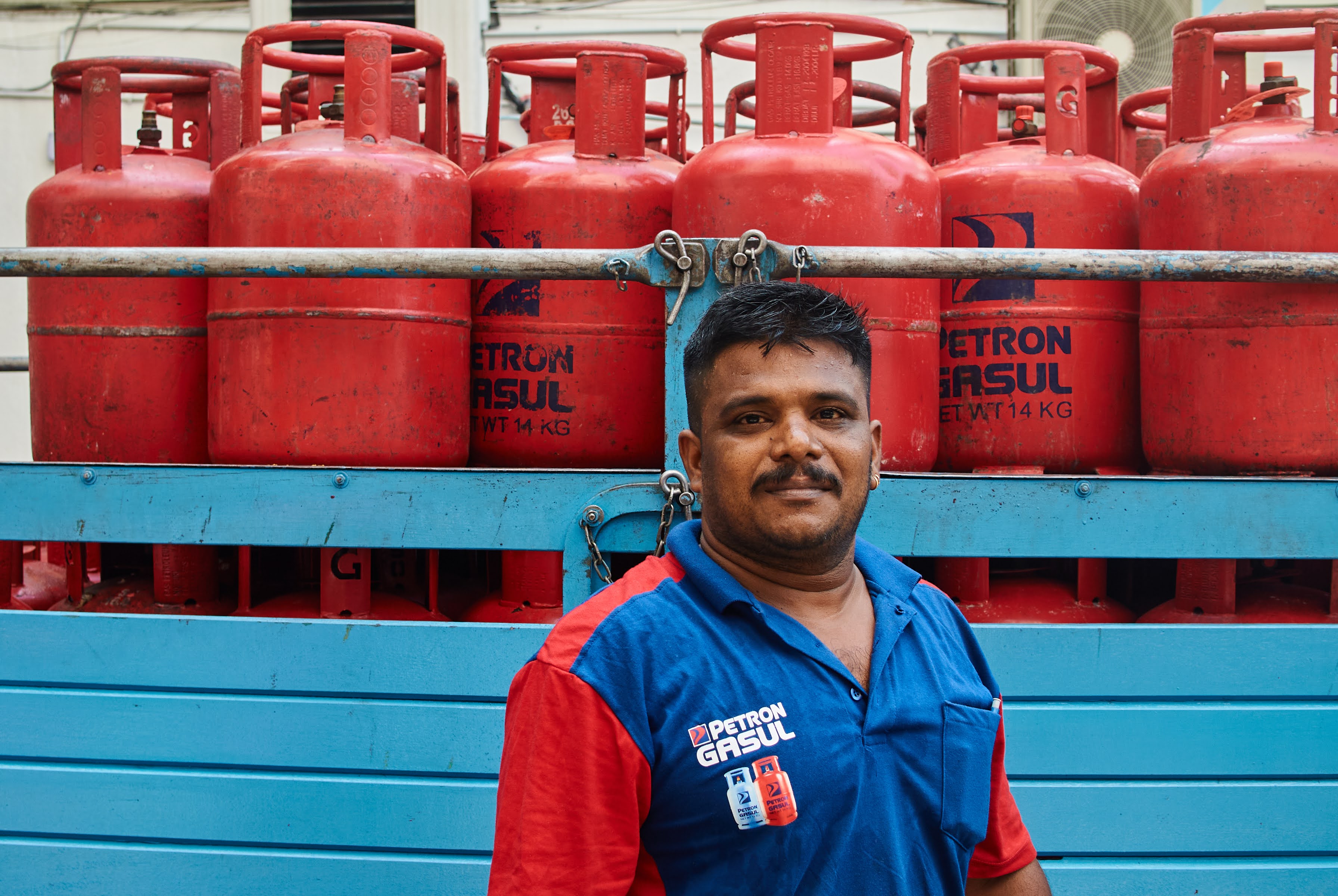I did not get the chance to explore the Nikon 1 system back then, because I was in no financial shape to own multiple camera systems, and I was perfectly happy with Four Thirds (and subsequently Micro Four Thirds) System that I was using. However, these tiny cute compacts with interchangeable lens capability from Nikon always got my curiosity and now after so many years since they were discontinued, the price went down so much in the used market, I just could not resist picking one up and giving it a try. After a few shutter therapy rounds, I must say I enjoyed the Nikon J1 a lot more than I initially expected. I also did a POV video, which you can find here (click).
I personally think that Nikon 1 System is the best 1 inch camera for street photography. Hear me out - 1 inch image sensor is more than enough to get the job done, especially when there is sufficient light, and I do most of my street photography under hot Malaysian sun. The resolution, dynamic range and noise control (what noise, in good light?) were sufficient for my needs. Then there is the ability to change lens, which most 1 inch compact cameras today do not offer. Sony RX100, RX10 series, and Canon G7X, G5X, or the Panasonic LX10, all have relatively fast zoom lenses, but they don't give you, say an equivalent of 50mm F1.8 prime. This was the lens that I purchased first before I got the camera, I needed a 50mm equivalent focal length prime, and preferably with large aperture like F1.8, so I found the Nikkor 18.5mm F1.8. While this lens is not perfect, but it does what I want to do in street shooting, my composition comes naturally.
The Nikon 1 system was quite daring at its time. It pushed certain imaging boundaries. The Nikon J1 was the first camera to get rid of the mechanical shutter, and adopt full electronic shutter. This enables two benefits - completely silent shooting which can be good for street, and without the restrictions of a moving shutter mechanism, the camera can go up to 60 frames per second burst sequential shooting, which was the fastest available to any camera at the time of its release. I thought that was super impressive!
Furthermore Nikon 1 system adopts hybrid autofocus, combining both phase detection and contrast detection AF, for highly accurate and fast AF. Continuous AF was also quite good at its time. This was before Canon implemented their dual pixel AF and before Sony had any hybrid AF system. The AF was very confident in even nailing moving subjects, and I was quite happy with the quick response, I managed to catch some very nice moments with the Nikon 1's AF. I dare say it is even better than what we find in Fuji X100 series cameras, or Ricoh GR series. No kidding, I'd take the Nikon's AF any day.
There are many, many reasons that led to the downfall of Nikon 1 system, it was not well received by reviewers and photographers everywhere, but that shall be a different topic of discussion. Maybe I will do a separate blog/video to talk about why Nikon 1 System failed, it was after all discontinued, and they stopped making new cameras for the 1 system many years before it was discontinued. I do see a lot of potential in the camera system, I think it is a shame Nikon did not push the system to the right direction.
Please support me & keep this site going:
























Hi Robin,
ReplyDeleteI think I see the problem with smaller formats, and that includes µ43rds which I know and love (it's still my only digital system to this day).
When looking at your close-up portraits you can clearly see that an 18.5mm lens is no 50mm. For my camera, I have the wonderful Panasonic Leica 25mm/1.4, but that also is no 50mm. The look is simply different.
I learnt photography from my father and his generation, like probably most of us did, and the best portraits I ever saw were from 6x6cm or even larger film. On a 6x6cm Rollfilm camera the standard focal length was 80mm, and that's a different (and better in my humble opinion) look than from a 50mm, same as with even longer lenses on plate cameras.
There are no 6x6cm sensors, and the ones that come close from Phase One are out of most peoples' reach. But you could try with a Rollfilm camera to see the difference. It's not the angle of view, it's just the picture asthetics, hard to find a good word for that. Try to borrow a so-called "full frame" camera from one of your friends, and then take the same portrait shot with that, with µ43rds, and with that so-called "one inch" sensor camera and their "normal" view angle lenses (50mm, 25mm, and 18.5mm). I think you'll see the difference.
Not easy to comment here on Blogger, I had to allow 3rd party cookies to do so - which I'll switch off again now.
Have a good time, and take care, and thanks for your wonderful reports and photos,
cheers,
Wolfgang